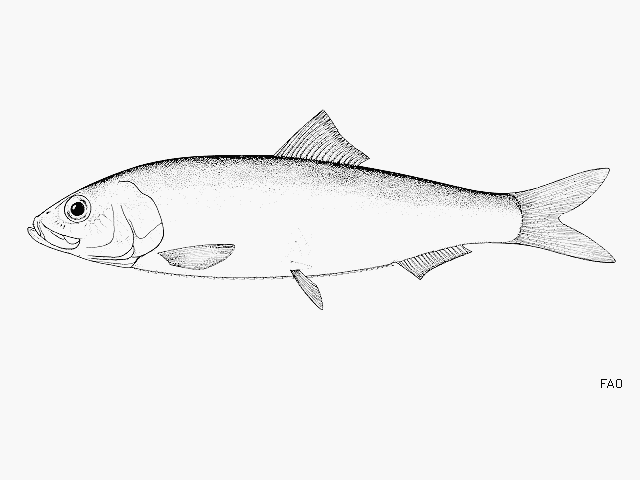| Clupeidae (Herrings, shads, sardines, menhadens) |
| 28.39 cm SL (male/unsexed) |
|
pelagic-neritic; marine; depth range 0 - 70 m |
| Southeast Pacific: Coquimbo, Valparaiso and south to Talcahuano, Chile; perhaps reaches further south to Mocha Island, but more southerly records may refer to Sprattus fuegensis. Subspecies have been noted (Ref. 6698): Strangomera bentincki bentincki (Talcahuano southward) and Strangomera bentincki cuga (Valparaiso to Talcahuano). |
|
Dorsal spines (total): 0-0; Dorsal soft rays (total): 13-21; Anal spines: 0-0; Anal soft rays: 12-23. Belly not strongly keeled (Ref. 188). Body dark blue dorsally and silvery white ventrally. Fins translucent (Ref. 27363). |
| Occurs in schools at or near the surface in coastal waters. Feeds on plankton, especially diatoms (filter-feeding). Breeds mainly from June to November, from a length of about 10 cm. Eggs and larvae are planktonic (Ref. 52017). Mainly used for fishmeal. |
|
Least Concern (LC); Date assessed: 28 February 2017 Ref. (130435)
|
| harmless |
Source and more info: www.fishbase.org. For personal, classroom, and other internal use only. Not for publication.
